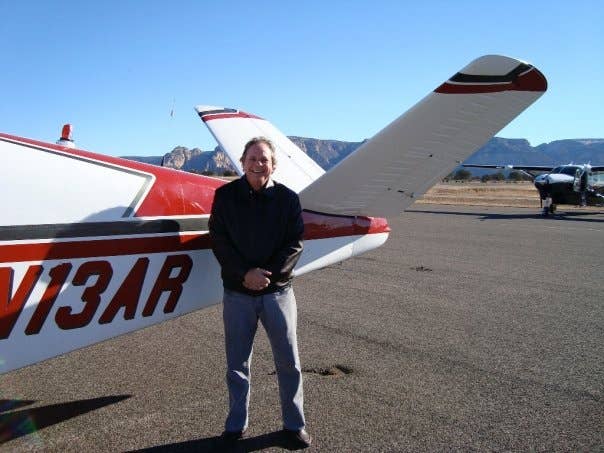
Arthur Rosen and his V-Tail Bonanza, into which he recently added ADS-B. Courtesy Arthur Rosen
Arthur Rosen decided to add ADS-B to the 62-year-old V-Tail Bonanza he's been flying the past 20 years, taking advantage of the FAA's $500 rebate program along the way. Rosen told Flying that although installation of the new Appareo Stratus ESGi equipment went pretty smoothly, certifying the equipment hasn't gone well at all.
At press time, the Arizona pilot told Flying he'd already spent just over three flight hours in the Bonanza before the aircraft passed both the airborne and ground certification tests. The flight times in addition to the more than three dozen emails he's exchanged with the FAA, not to mention additional phone calls to the manufacturer and the helpful folks at AOPA's Airports Division.
Rosen's still trying to figure out what happened and hoped his story might save other owners the grief he's experienced. "I thought the process seemed rather simple when I first read the guidelines at the FAA's ADS-B rebate site," he said. They mentioned the need to fly the aircraft post-installation for both a flight and ground test to certify. After installation, the testing began, but the Bonanza failed, again and again.
After receiving repeated agency emails telling Rosen only that he'd failed, Rosen reached out for more detail. That's when he was told to re-read CFR 91.225 about the airspace required for certification, Class A, B or C. Rosen never realized the specific airspace requirements from his first read of the rebate site. Flying found the regulation rather vague as well. Although the FAA guidelines claim to offer a graphical look at the required airspace, clicking the displayed hyperlink returns an error message telling viewers the map was coded in an unknown file format and nothing more. Rosen of course called the Appareo folks for guidance. After a phone diagnosis, they told him the installation seemed fine.
Once Rosen became aware of the need to fly in some rather busy airspace to certify, he coordinated a flight through the Phoenix Class B. This time, he passed the flight portion, but his Bonanza continued to fail the ground test. That’s when the FAA began emailing rather random-sounding solutions, ideas never mentioned in any of the agency documentation. One suggested he try “taxiing no faster than 15 mph,” but that didn’t seem to change anything.
Then the agency suggested he run the aircraft on the ground for at least two minutes to allow the ADS-B system to “sync up.” He tried that, but the agency said they had no record of his flight from Scottsdale.
“Then last Thursday I flew out and back to the airport again after a slow taxi and waiting a few minutes after I started up.” This time, he saw a note that said he’d passed the ground test but not the flight test. "I told the FAA people I’d already passed the flight test the week before. They told me they’d link up the flight and ground test to my registration number last week, but it never happened.”
Arthur Rosen's hoping for a friendly email from the FAA today, one that says the coordination's complete and his ADS-B is certified. Rosen jokingly told Flying on Monday night he's having trouble remembering just why he installed ADS-B.

Sign-up for newsletters & special offers!
Get the latest FLYING stories & special offers delivered directly to your inbox






